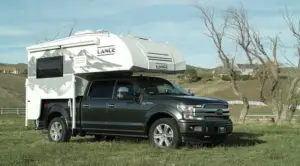A RV roof is a critical part of the RV and it determines how long a RV remains usable. One can off course change the roof if it is damaged. But, replacing the roof can be costly and once the original roof of the RV is gone it always becomes an unreliable factor.
This article covers the topic, roof weight limit for travel trailer or any other RV.
An RV roof that we used to get in older days prior to 90’s have changed a lot and different materials have flocked in. Better design, sturdiness and at the same time making sure the overall weight of the RV is not increased.
A RV roof in today’s world can be fiberglass, rubber or aluminum type. A rubber type is the most widely found one.
When it comes to finding out what kind of roof is there on our own RV, i am sure many of you will still be confused and wont know what exactly it is.
An RV roof should be cleaned at-least twice yearly or even more to keep it clean. Also checking its condition regularly is recommended.
All this needs you to climb up on the roof and that’s when this question comes, how much weight will the RV roof hold without issues. I am addressing the same question in this article.
What weight can the RV roof handle
RV roof can support 250 to 300 lbs, good enough to handle 1 person easily. However, this is not a strict limit. Based on material, thickness, age and condition of the roof, it can support up to 3-4 people.
Generally, RV specifications do not mention such a weight limit rating, but if a ladder is given on the RV then it normally means that the RV roof can support at least 1 person’s weight.
People often want to access the camper roof to do occasional maintenance or inspect it from time to time.
One can walk on the RV roof as long as it is in good condition and supports the weight. Avoid walking or standing on the roof when it is wet or in damaged condition. Fiberglass roofs are often strong and support higher weight.
Though RV roof’s are good enough to support weight of a single or multiple people, one should stand, walk or access the roof only when necessary. Prolonged Standing, walking can put unnecessary load, causing damage to the roof.
When i say the limit should be around 1 persons normal weigh, that does not mean the rv wont be able to handle the extra weight. It should be able to handle 2 or 3 or 4 people weight.
But wait! That’s like a one time thing. Once in while if you need that many people up there than that may be an exception case.
Remember, considering the RV roof condition, its thickness, material type is important. Not all RV roofs will be good enough to support more than 300 lbs. But, one person going up there for a routine maintenance once in while should be fine.
Precaution to take while on the roof
Your camper roof can have multiple items like air conditioner, solar panels, and antenna. Thus, you may be accessing the roof more often, but you need to be careful and take some precautions.
Roof can be slippery
Want to walk and do some work on your travel trailer roof? Be careful!
Walking on the roof top can be dangerous, if it is wet. With material like fiberglass the roof is slippery and without caution you may slip down and fall.
Also, walking on the edges is again an activity to be done with caution. Installing antennas or checking air conditioner are once in a year activity and you may also need a technician to do that.
Avoid unwanted roof walks
Some people use their RV roof to sit on chairs and get a better view of something like a local sports game or race. Now, that is unnecessary. Why would you want to take the risk and be there with your chairs.
A RV roof is good enough to hold upto 300 lbs but that does not mean you should put it to test many times. An old motorhome or travel trailer roof goes through sunlight, snow and its surface may not remain as good as it was new.
The capacity also decreases and materials like rubber can become soft and chalky. This can put the weight carrying capacity to lower limit.
Get the feel of roof
When you walk on the roof, if you feel the flex on the roof then be sure there’s problem and immediately get down.
Even when you don’t feel the flex or bending don’t assume it to be in excellent conditions. If you have been inside a RV and someone else was walking on the roof, then you get the feel of it which can be scary.
RV roof types
Whether you can walk freely on the roof or not depends on the factors like condition of the roof, its age and the most importantly the roof type. A RV roof can be of three types.
- Fiberglass
- Rubber
- Aluminum or metal type
Here is a my complete guide on identifying the camper roof type and maintaining it.
In earlier days, the tin material was used in making the roof. Those type of roofs were not suitable for climbing up there as they weren’t that strong. But, with time the changes have taken place.
And today, you get rubber roofs that are much strong and at the same time put less weight on RV.
Fiberglass
Out of all these types the fiberglass roof type is little bit more capable of handling weight. Fiberglass material is hard and wouldn’t bend or flex easily.
One problem with fiberglass roofs however, is that they can become smooth and slippery. Thus, going up there on the roof with fiberglass material could be little risky.
Fiberglass material roof needs periodic checking and cleaning but the professional maintenance is less as compared to rubber types.
You can see fiberglass material roof flex and you get the feeling that something will go wrong with the roof
Rubber
Rubber roof too can handle the weight but it is more soft and with age it becomes chalky which may not be good to handle the weight.
They need more maintenance as compared to others. Rubber again can be of two types. You either get EPDM or TPO types.
Metal
Metal or aluminum roofs cannot handle much weight even though they are hard. They are given support beams as they cannot handle the weight without them, they are heavy . Aluminum is heavy and is thus not used mostly.
Altogether, if you have aluminum roofs, then better be cautious while going up on the roof. Since there will be beams, make sure you make use of them while keeping steps or use the piece of plywood as i mentioned above distributing weight of your body. You need to do more cleaning in this type of material and regular inspection to identify any issues like breaks or leakages.
The reason why going up there is risky is because there wont be support and the roof is dependent on the edges.
How to climb up the rv
RVs do come with backside ladders attached which are great for getting up there. But, not all will have those. Such built-in ladders also don’t need any extra space as they would be fixed as an extension to your motorhome or trailer.
If your RV does not have such a ladder from the beginning then you can add a portable A frame ladder. But, with those you will need some space obviously and also the extra cost.
You can also get an extension type of ladder and get it fixed. I think that’s an excellent idea if you go on he RV roof often (which is not recommended but).
In case you have an RV rack for the roof to store items like kayak or bicycle, then going for a extension ladder is the way to go. You don’t really have to climb up there fully. You can climb up the last step and access the storage.
Using plywood piece to move
When you are on the roof standing on your feet will put the weight in concentration and you may want to distribute it in some way. A good way to do this, is to use a piece of plywood or similar material as you move. This will distribute the weight and make sure you don’t break the roof.
The roof thickness is a big factor. But, you will not be able to figure that out correctly, unless the manufacturer has some details put out somewhere on the roof or any other document or manual.
Generally, RV roof consists of multiple layers and the thicker one will be the plywood which could be close 1” in thickness or so.
On the top of that, there will be layers of other substrates and the main material rubber or fiberglass. Higher the thickness, higher will be the weight carrying capacity of the roof.
Old roofs : Another information that i could like to put out here is, the above answer may not be applicable to those who are still using those old tin material roofs. Those had the less capacity and standing on them was much more difficult. But, since the time rubber or fiber class materials came up the capacity has increased.
Why go up on the motorhome or trailer roof
Some of the reason why you would be up there are cleaning the roof, doing a routine checking of the RV, inspect seams, caulking, redoing seals, installing a tv antenna or fixing roof top air conditioner issue.
Most of these are occasional procedures and it should be fine to go up there provided you overload the roof.
How often should you do the RV roof seals? Ideally, it is recommended to inspect the seals regularly. This can include checking seals around antenna, air conditioner, vents and other roof seals. Re-sealing should be done at least in 3 to 4 years.
Some of these activities can in fact be done without going up on the roof. Like cleaning of the roof can be done by just standing on the ladder and using car brush with an extension enough to reach everywhere on the roof.
Many of us do this and its totally fine. You don’t have to go up there and it can also become slippery.
Maintenance of the RV roof
Average life of a RV depends on how long the RV roof will remain good. It can be replaced or repaired but doing periodic maintenance can help a lot in extending the overall life of roof. Here is a step by step guide to help you on RV roof maintenance.
The maintenance depends much on the type of material used for the roof. Each will need different equipment and cleaning accessories.
1. Inspection
As an RV owner you need to take care of entire RV and do periodic check of the RV. The roof needs special inspection to figure out if there are any leaks.
Sometimes it can be difficult to note such leaks with naked eyes. Visiting a RV professional can help a lot with this. Identification of issues is key in case of roof.
RV roof caulking need to be done to prevent water leakage. Such small fixes are needed in old roofs, otherwise the roof will get damaged to an extent that will need roof replacement. That will be bigger cost.
A professional camper roof sealing can cost in between $300 to $900 on average. The actual cost will depend on the type of sealant used and also on age or current condition of the roof.
If you are able to find roof leaks then you can also use leak liquids that help in preventing the leakage inside the RV or motorhome.
2. Cleaning
Make sure you clean the roof properly at-least twice annually. This can be done with products specially made for RV roofs. Debris and other dusts particles can accumulate on the roof and this can lead to damage on the long run if neglected.
3. Using roof covers
At times you cannot put you RV inside the garage and at that times if you can employ a RV cover to protect the roof then that should do a great deal of help. It protects the roof from mildew, snow and direct sunlight that can do a lot of harm over a period of time. This idea of using RV covers is always debated, check out this article to find out the detailed analysis on same.
4. Regular maintenance
Identifying the crack, rips or tears in the roof and fixing them will make sure the roof remains intact. There are various sealants, roof patches that can be used to fill the broken gaps.
Remember, if the areas that are affected are not taken care in time may result in bigger issues with time and the cost of repair then could be much more. Remember, the leaks can only be avoided by doing proper and periodic maintenance.
When you go down the road at speeds of more than 65 mph and with RV being so high, chances are that its roof will go through issues. And, the maintenance is inevitable if you want to avoid the leaks and cracks.





